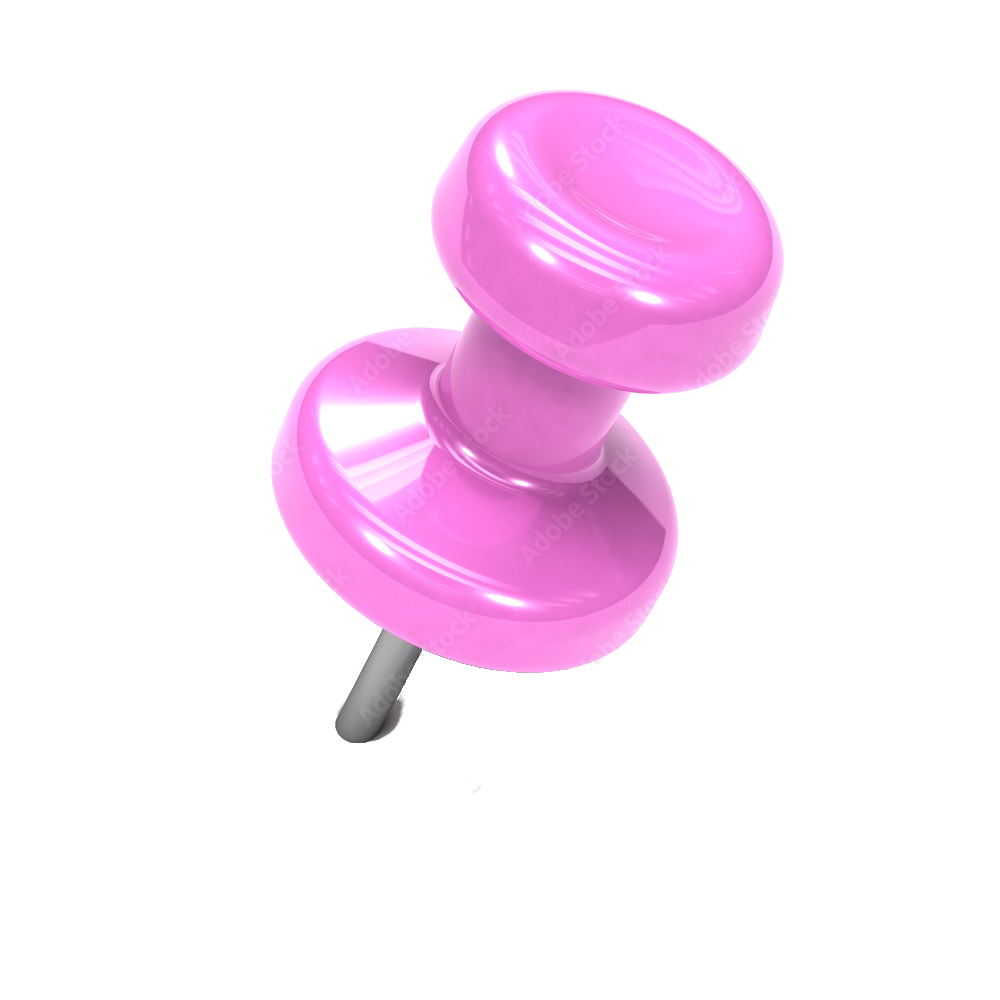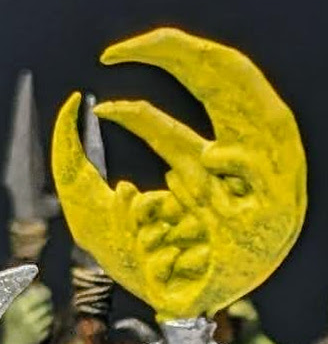I’m sure this won’t have any chilling effects amongst the researchers who keep us all safe.
Edit to add that Johnson & Johnson is/was also trying to use patent loopholes to make sure poor people die from tuberculosis; until the internet got mad.
The secondary patent particularly irked some advocates because the drug’s development was largely underwritten by public funds, according to a 2020 analysis. That study found public sector funds contributed $455 million to $747 million to getting bedaquiline to market, compared to $90 million to $240 million from J&J.
We pay for the development of the drug, they get the patent, then we pay for the drug. Socialize cost, privatize profits.
most of the hype about danger from talcum powder is quite fake. the link between cancer and the powder is hugely tenuous and the researchers are quite shameful. Poor J&J are being victimised when there are millions sufferring from the absence of their valuable and safe talcum powder,
So wait, J&J have already put aside 9 billion dollars for potential liability for the talc baby powder cancer claims and have stopped selling talc baby powder in North America, but yet they are suing researchers who made the issue known and constantly parroting that they aren’t admitting any wrongdoing. Nice.
There is a great deal of evidence to back up their claim.
the researchers or JJs claim?
JJ. But they also released some very specific details such as the name of people exposed and proof of exposure from other sources than talcum powder that was ignored. JJ would be quite liable if they even get a single detail intentionally wrong. I would tend to believe they released accurate details.
Yeh, sure. Let’s trust the corporation that is discontinuing the sale of talc based baby powder world wide, and is wanting to settle for $9 billion.
Either JNJ are actually doing the right thing here… or they are cutting losses, protecting themselves, looking after shareholders, whatever.
Maybe it’s cheaper than trying to recover from such a PR disaster.
Maybe turns out that cornstarch is cheaper/easier for baby powder, and $9b gets rid of a problem, solves marketing issues of cornstarch, and has long-term savings.Maybe I’m wrong and paranoid.
But I don’t trust JNJTo put that in perspective for folks, if money was seconds, 9000 seconds is ~2.5 hours , 9 million seconds is ~104 days, 9 billion seconds is ~285 years.
I could get along well on $9B
?? You believe a corporation by default is releasing accurate details in the context of clearing themselves of wrong doing?
That’s every corporation’s first step no matter how incredibly obvious that they are wrong.
Not by default but I do believe they should be allowed to press their case. Do you not?
And it is far from obvious.
This is not the only shitty thing J&J has done, not by a longshot.
All you need to know is how they pushed opioids on a generation of young people for nearly a decade without repercussions. How can you expect an entity like that to ever tell the truth against their own self interests?
LTL said the researchers concealed the fact that some or all of the patients involved in their studies had been exposed to asbestos from other sources.
If that’s true, it doesn’t look good for the researchers.
But at the same time, J&J has to hold some responsibility for having their “asbestos-contaminated consumer talc products” on store shelves!
On the one hand sure, that’s an issue. On the other hand, who hasn’t been in contact with asbestos in one way or the other. Asbestos has been banned for many use cases but it is still widely in circulation. It’s a bit like asking for people who have never been exposed to smoking.
And it should be pretty easy to get a group of people with same level of asbestos exposure who haven’t used J&J’s talc and compare the cancer % between the groups. That’s where J&J should be focusing if they knew they were in the right.
But surprise, this is probably just throwing everything to discredit science.
And it should be pretty easy to get a group of people with same level of asbestos exposure who haven’t used J&J’s talc and compare the cancer % between the groups. That’s where J&J should be focusing if they knew they were in the right.
Yes, that’s how I’d do it.
Perhaps researchers did do this, and found that there was no difference, but decided not to publish that.
Who knows? But it sounds like J&J is confident that they can prove that researchers were hiding facts, or else that’s an incredibly pointed accusation!
I say this as someone who hates corn starch based powder and goes out of his way to ensure his family jewels only receive the most succulent of asbestos/talc powders.
I hope J&J are right. But I am extremely skeptical. I also don’t like the chilling effect, as others have pointed out. Finally, they could be just trying to win in the court of public opinion. Never forget McDonalds hot coffee case.
Yes, that’s how I’d do it.
Materialistic conditions, we’ve been mentioning those words for 150 years.
If you were in a position where “I’d do it”, that means you’d be a high officer at J&J, you’d be a billionaire, or someone who loses their job if they don’t obey the billionaire. If you’re the employee you care about your job, or you get fired and someone else obeys them anyway, if you’re the billionaire you only care about your money
In the context of a researcher, “that’s how I’d do it” is basically for scientific integrity and due diligence in the methodology and design of the study.
I’d also add a control group who has never been exposed to talc or other known sources of asbestos to really be thorough.
But I get what you’re saying, and it’s sad that anyone would be in a position where making good choices would get them in trouble.
Not a lawyer but do they have anything to lose with this suit? (Other than money spent in the lawsuit that is.)
Because these headlines might change few minds, that J&J isn’t that bad. Maybe it’s worth it as a marketing cost, idk.
Not a lawyer but do they have anything to lose with this suit?
If they make the accusation and lose, it would also be pretty bad for them. First, they would likely need to compensate the researchers for defamation, and second, they would look even worse to shareholders.
I don’t know, but it’s an interesting lawsuit.
Yeah maybe I’ve been watching too much Succession so I think this is just the play here lol.
Off-topic, but is it a good show? I’m looking to add another show to my evening wind down. LOL
Perhaps researchers did do this, and found that there was no difference, but decided not to publish that.
Well hey if we are just gonna play “what if everything is a conspiracy” then maybe researchers found that Johnson and Johnson talc powder was actually sourced from Proxima Centauri but decided not to publish that little trade secret.
My old school had it in the walls, my father’s workshop had it in the rooftop, in the chimney insulation, etc. I’m pretty sure I haven’t been in danger as I haven’t built or torn anything of those down, but I for sure have been in contact.
I’m glad it hasn’t affected you and yours.
But the fact is that it does affect people.
Just to give anecdotes some empirical backing.
https://en.wikipedia.org/wiki/Asbestos
It really depends on the type of study it was, and what these sources of asbestos were supposed to have been.
If they were doing a comparison study, so long as the control group was exposed to asbestos in similar amounts and in similar environments, it’s still a strong finding. J&J shouting “they were exposed to other asbestos!” would just be an empty attack on the researchers’ characters, and an attempt to falsely discredit them to an uncritical and uneducated public.
Things do seem to be a bit more complicated than that, though, as these are post-hoc investigations with no control. That said, it looks like they tried to do their due diligence to filter out participants who had known environmental exposure to asbestos. If some of them lied or mis-remembered, then it’s up to J&J to show that the researchers were negligent or operating in bad faith.
That’s going to be a pretty big hurdle to climb. I don’t believe they actually intend to climb it.
The fact that the researchers asked about environmental during recruitment, plus the fact that J&J is only claiming that a small handful of people involved in the study were exposed to other sources of asbestos, really shows this for what it is: An attempt to scare researchers away from doing research, and especially from agreeing to be provide expert testimony in lawsuits.
One of the defendants here even has a new paper out this past January that includes patients with known environmental exposure to asbestos, and they show that cumulative exposure from all sources matters. Including exposure from talc:
Conclusion
For individuals with exposure to asbestos through cosmetic talc usage and additional alternate sources, all exposures contribute to the development of mesothelioma. Published case reports and case series have identified over 100 individuals whose sole exposure to asbestos was through cosmetic talcum powder usage.This finding basically cuts J&J’s apparent argument off at the knees, and was published months before they ever filed suit. They’d have been aware of it at the time of filing. They don’t seem to have anything here. Just the opportunity to try and make their detractors look as dirty as they are in the eyes of people who haven’t read any of the research.
The wording is that “researchers concealed”, which is what they need to prove.
Keep in mind, it was that same research that cost them billions of dollars and tens of thousands of lawsuits, so anything to invalidate the original papers is going to benefit them.
This finding basically cuts J&J’s apparent argument off at the knees
It might be quite the opposite! The study itself concludes that “for individuals with mixed exposures to asbestos, all exposures should be considered”.
If J&J is saying what I think they are saying, then the researchers made these products look more harmful than they were, and included people who would have been harmed by other exposure to asbestos but concealed that fact in the study.
Either way, J&J did a horrible thing by having asbestos-laden products in the market. I’m not on their side at all, but I also don’t like bad science, so the outcome of this lawsuit will interest me regardless of who wins.
It might be quite the opposite! The study itself concludes that “for individuals with mixed exposures to asbestos, all exposures should be considered”.
Yes, but the study still shows that people with no environmental exposure still got cancer. It’s still explicitly stating that talc exposure is asbestos exposure. If J&J’s argument is that these researchers made their product look more dangerous than it is by including people with environmental asbestos exposure in their studies – whether by accident, or for nefarious purposes – and therefore creating a false link between talc and cancer, this paper side-steps that issue entirely by including people with and without known exposure, and showing that talc exposure is equivalent to environmental exposure.
If J&J is saying what I think they are saying, then the researchers made these products look more harmful than they were, and included people who would have been harmed by other exposure to asbestos but concealed that fact in the study.
Proving that they concealed this information would be difficult, I think, though it would be devastating not only to their bank accounts, but to their careers more generally. Emory, Maddox, and Kradin’s study explicitly states:
One hundred forty subjects with documented exposures to cosmetic talc were initially reviewed. Exposures were identified through sworn deposition testimonies and answers to sworn interrogatories provided from subjects, parents, and spouses. Sixty-five subjects were excluded due to recalled occupational or paraoccupational exposures to other sources of asbestos.
So, that wouldn’t even be a lie of omission. It would be straight academic malpractice. Their academic careers would be over.
Yes, but the study still shows that people with no environmental exposure still got cancer.
There’s no denying that asbestos in talc products cause cancer, but the argument is “to what extent”?
For instance, why doesn’t the study have a control group (i.e. no talc and no other exposure to asbestos)? That would at least give some idea of the risks from using talc compared to no talc use.
The way the study is set up, it’s like comparing smokers who had a pack a day vs those who had 1.5 packs a day. Where are the non-smokers?
It seems that the loser in this case would come out severely damaged: on one hand, you’ve got shareholders and a possible countersuit for defamation, and on the other hand you have a career ending outcome. I would hate to be either party!
It’s true, the results are weaker than if they had done a comparison study, but a lot of medical research is just post-facto observation reports. Like, to do a proper double blind study here, you’d have to start with healthy people and then knowingly expose some of them to something you suspect may be a carcinogen.
That’s not going to pass the ethics board.
You can look at people who have already gotten cancer and try to lump them into those who have used talc-based products and those who haven’t, but then how do you actually measure the impact of the talc there? Do you look at the number of patients who did use talc-based products vs those who didn’t? Those might just reflect the rate at which those products are used among different subsets of the population.
The key bit here is that the kind of cancer they’re looking at – mesothelioma – is known to be caused by asbestos. It’s also known that talcum powder contains asbestos. So, the observational link here is seeing whether people with mesothelioma have had known significant exposure to environmental asbestos and how much exposure they’ve had to talc-based products. And if you can see in your observations that higher or more prolonged exposure to talc is correlated with increased mesothelioma rates, and can assume that these people – based on their own memories – have not been exposed to environmental asbestos at a rate higher than any other average person, then environmental exposure becomes an independent factor and you can assert the correlation between talc exposure and cancer rates.
I’m betting one dude in the study renovates his house and he had asbestos containing outside walls or something and now J&J is making a show of it.
We shall see, but I wouldn’t be surprised this is more of an intimidation tactic than anything.
It’s a pretty wild allegation. They would have to have known about the other sources of exposure and deliberately withheld that information. Even if the patients had had some other exposure, it’s even less likely that the doctors would have known about it, and their study will have been designed as well as practicable to find out.
You don’t have to have merit to file a lawsuit. You can try to intimidate or bleed a defendant out.
But this is also how you end up with stuff blowing up in your face spectacularly.
My favourite example of this is when McDonalds sued Irish burger chain SuperMac’s for trademark infringement, only to lose their entire trademark for Big Mac’s across all of Europe.
deleted by creator
It’s a pretty wild allegation. They would have to have known about the other sources of exposure and deliberately withheld that information.
That’s what makes it do damning. If J&J proves this, it would be a disaster for the researchers.
I’ll be very interested in seeing how this plays out.
We desperately, above all other issues, need to resolve the fact that big companies can win in court simply by paying until the other guy can’t afford to keep dealing with the legal system.
We desperately, above all other issues, need to resolve the fact that big companies can win in court simply by paying
In the Soviet Union, capital punishment was carried out by various methods, including firing squads, hanging, and later, the use of a single gunshot to the back of the head. These methods were employed for different periods throughout the Soviet Union’s history, depending on the prevailing laws and policies.
What does that have to do with the conversation being had here?
Also, not that any of this is relevant to the actual topic at hand, but that’s different from the United States… How?
Just this year Idaho approved the firing squad as a means of execution. It joined 4 other states.
We now use the lethal injection, but research is showing that it isn’t painless, it just looks like it is. We used the electric chair for decades, and hanging before that.
What does that have to do with the conversation being had here?
Execute the ultra rich, problem ends. No man, no problem.
I’ll take our current system over the Soviet one every day of the week. Not starving and not living under an evil dictatorship beats an unfair court system.

You’re already living under an evil bourgeois dictatorship.
deleted by creator
The inefficiencies created by the Soviet system will lead to yet another round of famine and other problems that will make those stats in your infographic look cute.
Go try your perfect world economic system propaganda on someone else who is dumb enough to buy it.
“My guess at the future will make your facts about the now irrelevant because I’m smart”
The Soviet Union existed in the past. Their policies resulted in famine.
Dinosaurs existed in the past. Their policies resulted in no shelter from asteroids. Therefore we need all available effort to go towards asteroid protection now. Forget that hunger and famine only exists in the now because we let it to justify capitalism. We need to worry about what happened in the past.
Above is obviously sarcasm
Using your own rhetoric I could argue that the United States had famines in the past so therefore it will have them again.
War resulted in famine.
I… what?
That’s a SLAPP suit.
Does the place they sued them in even have SLAPP laws?
The complaint is here. Start on page 23 for the specifics. Basically, they’re saying the patients in the study were actually plaintiffs in other litigation, and it came out in that litigation that many were known to have been exposed to asbestos fibers in homes, schools, or workplaces.
Holy crap that was a crazy read. LTL, the North Carolina shell company owned by J&J, tragically lost sales revenue and went bankrupt “because of their 2020 study”. “To set the record straight” they are de-anonymizing the data to dox 5 of the participants and then going through those cancer patient’s lives to say that they had contact with industrial asbestos at some point. Their main claim against the only patient they have positively identified, Lanzo because he tried to sue J&J, is that his middle school locker room and basement later had asbestos pipes removed. Their claim against #2 after matching her tumor stats is that her dad worked with pipes that had asbestos. The third, again matched by tumor measurements, had a husband who once told a UCLA doc on a visit that he was doing some demolition that might’ve had asbestos. The fourth, “matched” only by her age, smoked and sued Kent cigarettes which were proven to contain asbestos. The last is an age match to a cleaning lady who sued J&J previously and said in court she cleaned buildings and navy ships that “possibly had asbestos”.
Their claim is that since at least one patient might’ve come into contact with asbestos from a source that wasn’t baby powder the entire study is false. Basically, they dig through peoples lives and if they ever visited somewhere that has any asbestos on record or lived with someone who mentioned asbestos worries to a doctor they think you should be disqualified from being linked to Johnson and Johnson.
Which seems rather legitimate.
Except that there were over 20 participants in the study and J&J is trying to claim potential, possible exposures to asbestos that they could only come up for 6 of them means that nothing in the study is correct.
That is a significantly high number as it is six ‘proved’ cases. Some people wouldn’t even know if they were exposed by other sources and even if they knew, would it be documented? Chances are we have all been exposed to asbestos and other carcinogenic chemicals both natural and man-made. The correlation was very weak to begin and it seems some of the people that did this study did willfully ignore details that make is suspect. I like to think all scientists are working on our behalf but there is a monetary motive to attain certain positive results in this case. We shouldn’t automatically give them a pass.
They don’t automatically get a pass. They get peer reviewed.
It’s also not one study. They’ve done multiple over the years, with hundreds of participants. They’ve done studies where they include people with known environmental exposure, and they still find that exposure to talcum powder counts as part of cumulative exposure.
Is it possible they’re just flagrantly lying about their research results? Of course. Tell good enough lies and it becomes up to reproduction studies to find contradicting results. But there’s as much money, if not more, to be found in finding those contradicting results, and yet…
exactly. J&J are the victims in this situation. People do not realise it yet. Most of those int he legal community know the real fault lies in the stupid lawyers that J&J used first time round. Lousy and shoddy.
“Let’s burn down the observatory so this never happens again!”

Ahh yes… amazing how they never short on money for these adventures
Money is only a problem when raising wages.
i’m sorry, they fucking what?













